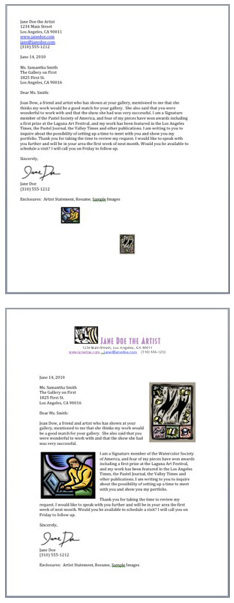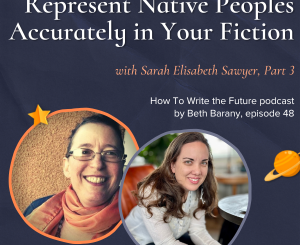Artist Entrepreneur: C: Cover Letter— The Artist’s Alphabet Guide to Writing About Your Art
Welcome to Artist Entrepreneur Fridays, where we talk about the fun, wild and scary ride of succeeding as an artist entrepreneur of all stripes and types and mediums.
Welcome back guest columnist, Aletta de Wal. She specializes in helping fine artists succeed in their careers. She’s posting regularly on “The Artist’s Alphabet Guide to Writing About Your Art” and other success tips for fine artists around writing. This week it’s about cover letters — a useful topic for all of us! Enjoy! And let us know if you have a particular topic you’d like Aletta to address. Thanks!
PS. As a writer I’m inspired by visual and love seeing the similarities between writing as a business and visual art as a business.
^*^
With homage to Big Bird on Sesame Street, the letter “C” brings this post to you, for Cover Letters.
When I think about cover letters, it brings to mind sending out 65 resumes when I graduated from university. I really had no idea what to include. I had a company name and address, but no idea of who would read the cover letter, or if they would look at my resume. All I knew was that I really needed a job, and that was first and foremost in my mind. I only wrote one letter, and then changed the name and address for each submission. It was the gambler’s jackpot approach – hoping that with enough hits, eventually I would win a job.
I got many form letters “rejecting” my application, or no reply at all. Years later when my job was to hire tellers, I understood. I saw the same hollow words and standard phrases in the cover letters. Anyone who had taken the time to personalize the cover letter got my attention. The others went to the ‘B’ list. I only looked at them if the first harvest did not yield enough job candidates. I sent a personal reply to the personalized submissions and a form letter to the rest.
A well-written cover letter won’t guarantee you results, but you can be sure that a poor one won’t get you past “hello,” as this gallery dealer wrote:
“I have received letters that were two and three pages long. I never have the time to read about the life and times of an artist whom I did not know. When reading a cover letter, the most important thing I wanted to learn about this person was whether the artist knew anyone I knew. And when these artists mentioned a familiar name, I would spend a great deal more time reviewing the material.
“Recently I saw a cover letter from an artist who had run-on sentences and no break between paragraphs. It was impossible to follow what this artist was trying to say. Remember that with any writing you do, keep it simple and understandable to the general public. When you have only a short amount of time to get your point across, it is essential to be clear and concise.“
Each time you apply for a gallery exhibit, a museum show, a grant or a residency, you apply for a job. It’s worth the time to make your submission shine.
- Know your audience.
- Think of your cover letter as “first contact” with someone you have yet to get to know and who doesn’t know you all that well, if at all. this is the time to do some research. Learn about the person and find out what arouse their curiosity and interest about you and your art.
- Show respect by addressing the cover letter to a specific person. Write to a human being, not a job title. A letter that begins with “Dear Gallery Dealer,” “Dear Curator” or, worse yet, “Dear/Sir/ Madam” shows that you have not done your research.
- Writing is a four-part process. Think, Write, Edit and Check. Few people can just sit down and write the perfect letter first time in just a few minutes. It takes more skill and time to write a good short letter than a poor rambling one.
1. Think
Be clear about why you are writing. Each cover letter you send should have a single focus.
2. Write
Most people don’t have the time or interest to read a long letter. Limit your cover letter to three paragraphs. Keep each paragraph to three or four sentences. Keep each sentence focused on the purpose of that paragraph:
-
-
- the first paragraph introduces you and mentions any connections or recommendations that support your purpose.
- the second paragraph lists the recent highlights of your career related to the purpose of your submission.
- the third paragraph lets the recipient know what material they can keep on file; what to send back in an accompanying SASE (stamped, self-addressed envelope); when and how you will follow-up.
-
3. Edit.
Pay attention to words, grammar and tone. If writing is not your strong suit, find someone who can edit and proof read your cover letter before you send it.
Set the letter aside for at least a few hours. Come back to it with fresh eyes. Put yourself in the reader’s shoes and see if it makes sense, is appealing and if you would want to go to the next step.
4. Check.
Review grammar and spelling. If you use spell-check software, remember that it does not pick up incorrect word usage and watch out for auto-correction of words like “you’re” for “your.”
I love the Flesch-Kincaid Index that gives you a score for passive sentences, readability and grade level. (You will find it in the spell-check Options in Microsoft Word. The readability for this post is 73.6 and the grade level is 6.1. That means you can scan it quickly and get the message.) I use grammarly.com for checking grammar, citations and word usage.
- Package Your Words
Okay, you’ve written a cover letter, what next? Take a look at these two images. They both have the same info, but which one do you think will be read, and be taken more seriously? The recipient WILL judge this artist by how it looks. The content is the same, but the format and layout are different.

- Instead of just typing your name, add your logo and contact info into the header area. The formatting will remain stable even if text and images are moved;
- Make the images larger so the recipient can actually see what they look like. Place them within the body of the letter, to create more visual interest.
- Adjust the margins so that they are equal side-to-side and top-to-bottom.
If you were a gallery owner or show judge, which artist would you choose?
Cover letters give a personal touch to everything you send out. People look at your cover letter first, so it deserves your attention. A good cover letter captures your reader’s attention. Attention is the first step to relationships. Relationships lead to sales. Have I got your attention now?
Next time, the letter “D” for descriptions of your art.
^*^
Aletta de Wal inspires fine artists to make a better living making art in any economy.
Aletta works with part-time, emerging and full-time artists who are serious about a career in fine arts. Aletta makes make art marketing easier and the business of art simpler.
More information at: http://www.artistcareertraining.com/artmatters-newsletter/








